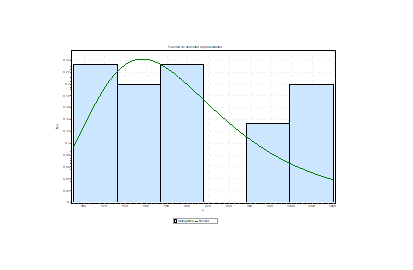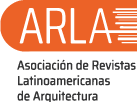Determination the probability distribution of the concrete mixing components
DOI:
https://doi.org/10.13140/RG.2.2.19769.90726Keywords:
concrete mixes, concrete components, ACI manual, Porrero manualAbstract
The purpose of this research is to describe the statistical behavior and determine the probability distributions that best fit each of the components of conventional concrete mixtures, which are water, cement, fine aggregate and coarse aggregate, designed by the Porrero and ACI methods for compressive strengths between 250 and 280 Kg/cm2 with nominal maximum size of 1,0 inch, settlements up to 6,0 inches, Portland cement type I or type CPCA1 and natural sand. For this purpose, it was necessary to build a database under the consultation of degree theses elaborated in the Dean of Civil Engineering of the Universidad Centroccidental Lisandro Alvarado, 228 degree works were reviewed of which 66 complied with the established scope. The descriptive statistical analysis reported low and intermediate dispersions, it was concluded that the arithmetic mean obtained represents the data set by variable and the distributions obtained for water, cement, fine aggregate and coarse aggregate were Gen. Gamma (4P), Gen. Extreme Value, Weibull (3P) and Frechet respectively for the ACI method and for that of Porrero Hypersecant, Log-Pearson 3, Johnson SB and Chi-Squared (2P) as appropriate.
Downloads
References
ACI 211.1-91 «Standard Practice for Selecting Proportions for Normal, Heavyweight, and Mass Concrete» American Concrete Institute, 2002
J. Porrero, et al. «Manual del concreto estructural» SIDETUR, Caracas, Venezuela, 2004
A. García, «Análisis de Distribuciones Estadísticas Alternativas a las Tradicionales para la Optimización de los Caudales de Cálculo Empleados en los Estudios Hidrológicos» (Tesis Doctoral), Universidad de Extremadura, Badajoz, 2013
Z. Cerón, «Análisis Probabilístico del Concreto de Alta Resistencia» (Trabajo de Grado) Universidad Católica de Colombia, 2013
COVENIN 221:2001 «Materiales de Construcción. Terminología y definiciones» FONDONORMA, Venezuela, 2001
N. Azuaje, et. al, «Estimación de la constante de carbonatación “K” en concreto expuesto al ambiente en la ciudad de Nirgua, Estado Yaracuy» Trabajo Especial de Grado, Universidad Centroccidental Lisandro Alvarado, Venezuela, 2013
R. A. Dantas, «Ingeniería de tasaciones una introducción a la metodología científica» premio Charles B. Akerson – UPAV 2000, Ed. Pini Ltda, 2002
M. Suarez, «Curso Estadística» Universidad Centroccidental Lisandro Alvarado, Decanato de Ingeniería Civil, Venezuela, 2008
A. Rojas, «Correlación entre el pulso ultrasónico y la resistencia a compresión en cilindros de concreto» Trabajo Especial de Grado, Universidad Centroccidental Lisandro Alvarado, Decanato de Ingeniería Civil Urbanismo, Venezuela. 2011
Mathwave Tecnologies, «Ayuda del Software EasyFit versión 5.6.», 2015

Published
How to Cite
Issue
Section
Copyright (c) 2021 Mariana Suárez Pereira, Fiamma Dubraska Peña Fabiani

This work is licensed under a Creative Commons Attribution-NonCommercial-ShareAlike 4.0 International License.
The opinions expressed by the authors do not necessarily reflect the position of the editor of the publication or UCLA. The total or partial reproduction of the texts published here is authorized, provided that the complete source and electronic address of this journal is cited. Authors have the right to use their articles for any purpose as long as it is done nonprofit. The authors can post on the internet or any other media the final approved version of their work.






.png)




